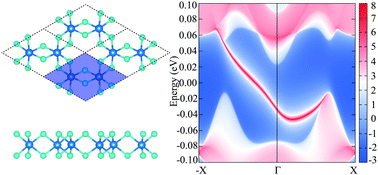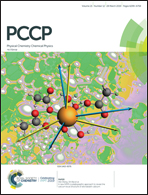Prediction of intrinsic two dimensional ferromagnetism realized quantum anomalous Hall effect†
Abstract
Recently, the discovery of intriguing properties in intrinsic two dimensional ferromagnetism has spurred huge interest in investigating their applications in spintronics. Here, we predict that the monolayer of FeX3 (X = Cl, Br, I) possesses a quantum anomalous Hall insulating phase generated by the honeycomb lattice of iron atoms. We find that the ground state of FeX3 is a 100% spin polarized Dirac half metal with a ferromagnetic Curie temperature Tc = 116–175 K predicted from Monte Carlo simulations. Taking into account the spin orbit coupling, the Dirac cone opens a global band gap of 8.4–36 meV. The anomalous Hall conductivity calculation shows the Chern number C = −1, indicating the presence of a single chiral edge state in nanoribbons of finite width. Moreover, we also find the critical value Uc when we perform DFT+U calculations. The band gap firstly increases and then gradually decreases while keeping C = −1 for 0 < U < Uc, a metallic phase of Egap = 0 appears at Uc, and a gap opens for a trivial Mott insulating phase of C = 0 for U > Uc. Our work adds an experimentally feasible member to the quantum anomalous Hall insulator family, which is hoped to have great application potential in spintronics and nanoelectronics.



 Please wait while we load your content...
Please wait while we load your content...